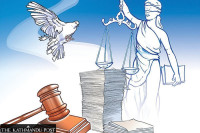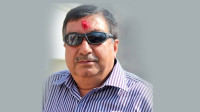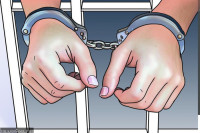National
PM says Nepal will develop 10,800MW Chisapani project
Ministry says talks on for conducting a new study to update the feasibility report.
Prithvi Man Shrestha
Prime Minister Pushpa Kamal Dahal on Friday said the government plans to develop the 10,800-megawatt Karnali Chisapani Multipurpose Project involving the state-owned Nepal Electricity Authority.
The project is the largest hydropower plant ever envisioned in Nepal and will be developed on the Karnali river at Chisapani, Bardiya and in Kailali district.
Dahal’s announcement comes at a time when the government is also planning to hand over the task of developing the 1,200MW Budhi Gandaki hydropower project to the power utility.
“I am happy to reveal that the government is moving ahead with vision and plans to develop mega projects like the 1,200MW Budhi Gandaki storage project and the 10,800MW Karnali Chisapani multipurpose project with the participation of the NEA,” Dahal said, addressing the 38th anniversary event of the Electricity Authority in Kathmandu.
He sought to justify the NEA’s involvement in these projects saying that the state-owned utility has qualified and capable human resources.
Even though the prime minister announced that the government planned to involve the NEA in the Karnali Chisapani project, it is not yet clear whether the utility would take a leading role in developing this project and how the resources would be generated for its development.
A senior official at the Ministry of Energy, Water Resources and Irrigation said there had been initial discussions over carrying out a new study on the development of the project through the NEA.
Energy Secretary Dinesh Ghimire told the Post that there had been discussions at the ministry to conduct a new study to update the feasibility study prepared in 1989.
“As the Department of Electricity Development does not have enough human resource, there have been talks about assigning the task to the NEA,” Ghimire added.
He, however, clarified that no decision has been taken to award the project to the NEA itself. “After the study is conducted, the NEA can itself carry out the task of project development or any other modality can be explored,” said Ghimire.
The last feasibility study of the project was initiated in 1986 and completed in 1989. Himalayan Power Consultants (HPC), a consortium comprising Acres, Canada; Ebasco USA; Shawinigan, Canada; and SNC, Canada had conducted the feasibility study and determined the capacity at 10,800MW.
The project was initially conceptualised as early as the 1960s. Nippon Koei Co Ltd (NK) of Japan had studied its feasibility between December 1962 and February 1966. The study had suggested that a run-of-the-river 1,800MW project could be developed by constructing a high dam at the Chisapani gorge.
The studies and recommendations of NK were reviewed by the Snowy Mountains Hydroelectric Authority (SMHA) of Australia in 1968.
It suggested increasing the installed capacity of Karnali Chisapani to 3,600MW and erecting a gravel fill dam instead of a concrete arch gravity dam proposed by NK.
In 1976, the Nepal government hired two firms, Norconsult from Norway and Electrowatt from Switzerland, to review both the recommendations and resolve the differences. Both firms concurred with the SMHA recommendation and proposed further studies for the final designs of the Karnali Chisapani multipurpose project.
Even though the project was conceptualised long ago, there has been little progress towards its execution as a lot of money and expertise will be required.
Then-finance minister Bishnu Prasad Poudel announced in the budget for the fiscal year 2016-2017 that an initiative would be taken to develop Karnali Chisapani Multipurpose Project as a tripartite project of the friendly nations India, China and Nepal.
But little progress was made in this regard with successive governments not giving priority to this project.
Last year, some reports suggested that the Indian billionaire Gautam Adani had expressed interest in the project.
Quoting the sources, a number of media outlets reported that representatives of the Adani Group had met with former energy minister Pampha Bhusal and senior officials of the energy ministry as they were interested in developing Karnali Chisapani and other projects in the Karnali basin.
Energy Secretary Ghimire expressed his ignorance of it. Now, the prime minister has announced that the NEA would be a part of the project’s development.
Electricity Authority officials, however, say it would be challenging for the NEA to develop the project by bridging the financial and technical resource gaps.
The biggest project that the NEA has developed with its own expertise is the 456MW Upper Tamakoshi. Now, the utility is preparing to develop the 1,061MW Upper Arun, 635MW Dudhkoshi Storage Hydroelectric Project and the 1,200MW Budhi Gandaki.
“Karnali Chisapani is a substantially bigger project and domestic resources will not be enough to develop it,” said Tara Prasad Pradhan, deputy managing director at the NEA.




 8.12°C Kathmandu
8.12°C Kathmandu















